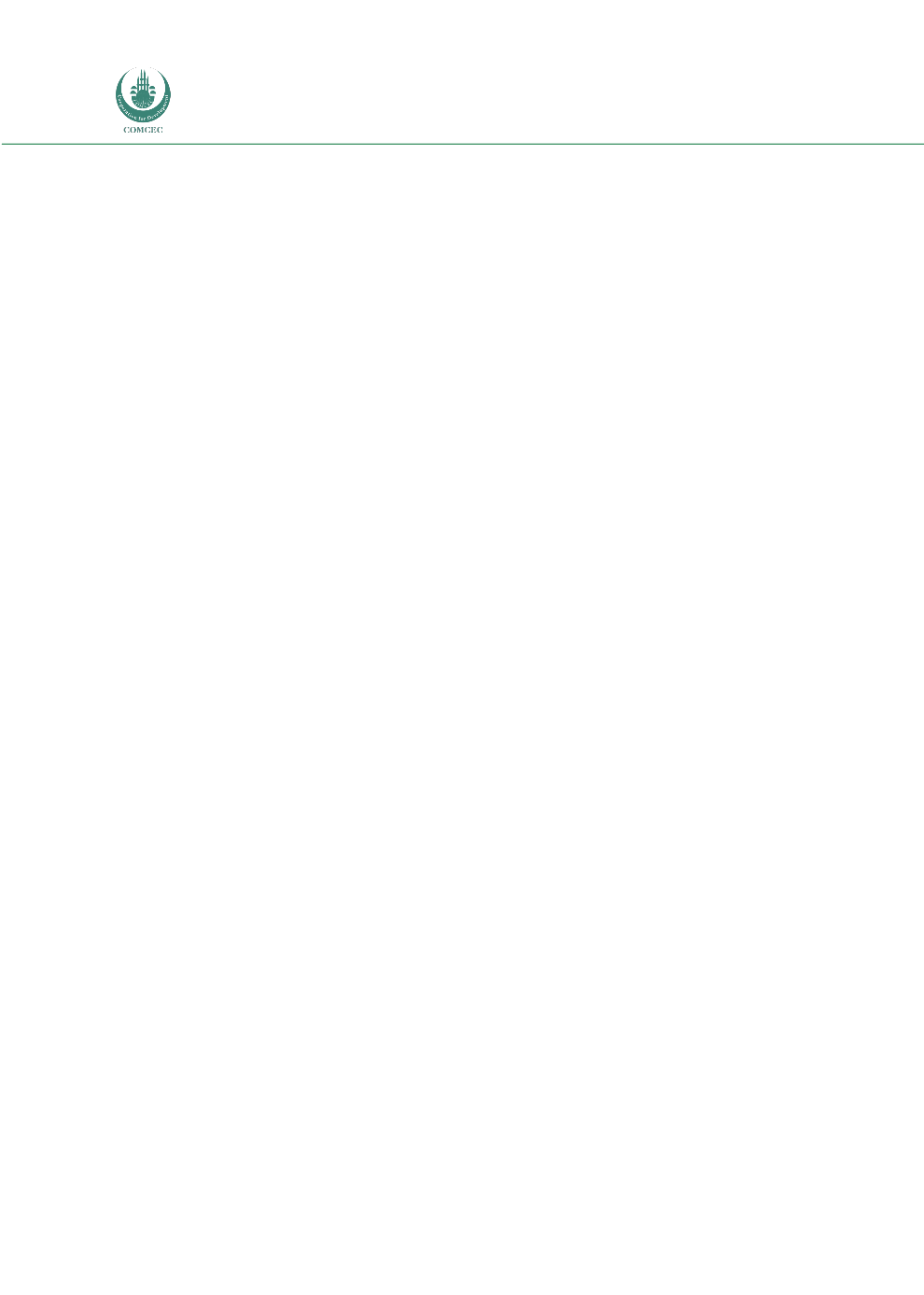

Risk Management in
Islamic Financial Instruments
90
4.4.4 United Arab Emirates (UAE)
Located in the Gulf region, the U.A.E. provides vibrant environment for the Islamic financial
services industry to grow. The country has a relatively comprehensive regulatory environment
to promote Islamic finance. More recent developments in the Islamic banking sector are aimed
at innovating instruments to cater for market demand, especially Shariah-compliant liquidity
instruments.
In addition, the U.A.E. provides infrastructure and advanced facilities to promote foreign
investors. The country also provides attractive business opportunities for foreign direct
investors, like many Free Trade Zones across UAE with attractive incentives for new startups,
i.e. 100.0% tax exemption.
4.4.4.1 U.A.E. Banking Sector
The following analysis consists of data from 8 U.A.E. Islamic banks for which data is available
on the BankScope database. The banks are: (8) Ajman Bank, Tamweel PJSC, Noor Bank, Sharjah
Islamic Bank, Emirates Islamic Bank PJSC, Al Hilal Bank PJSC, Abu Dhabi Islamic Bank - Public
Joint Stock Co., Dubai Islamic Bank PJSC, and Amlak Finance PJSC . Average total assets of the
U.A.E. Islamic bank are 8,004 million USD, with average deposits of 6,137 million USD. Islamic
banks, on average, employ 87 workers across 8.89 branches.
4.4.4.2 Risk Matrices
Asset Quality Ratios
Chart 4.39 shows that, for the U.A.E. banks, the Asset Quality of the Islamic banks’ loan
portfolios is rather poor, compared to that of their conventional counterparts. The average
Loan Loss Res/Gross Loans ratio and average loan loss reserve over gross loan ratio for the
Islamic banks are 5.01% and 38.84%, which are higher than that of their conventional
counterparts at 4.52% and 27.99%, respectively. In addition, Islamic banks also maintain
lower loan loss reserve/ impaired loans ratios (70.23%) and a negative average NCO/ Net Inc
Bef Ln Loss Prov ratio (-2.71%), compared to those of the conventional banks of 73.86% and
11.61%, respectively.
Capital Adequacy ratios
In general, Islamic banks in the U.A.E. maintain lower Equity / Tot Assets ratios (13.15%),
compared to conventional banks with an average of 13.15%, which represents higher risk
exposure. Additionally, the Equity / Net Loans and Equity / Liabilities ratios for the Islamic
banks are 21.08% and 17.64%, which are lower than those of the conventional banks of
25.84% and 20.00%, respectively. (See Chart 4.40)
Operational Efficiency ratios
A higher average Net Interest Margin for the conventional banks (3.26%) represents cheaper
sources of funding that the conventional banks enjoy over their Islamic banking counterparts
(2.86%). In addition, Chart 4.41 also shows that conventional banks provide higher ROAs and

















